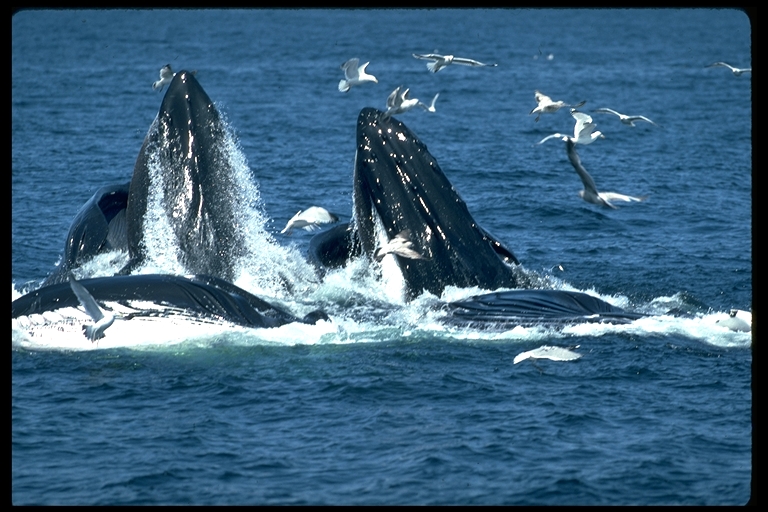
© unknown
A 500-year-old right whale bone discovered deep in the frigid waters of the Gulf of St. Lawrence is shedding new light on the demise of one of the world's most endangered marine mammals.
With fewer than 400 North Atlantic right whales alive today, experts have long believed that the species first ran into serious trouble with the arrival of Basque whalers from Europe in the 16th and 17th centuries. They harpooned them by the thousands off the coast of Labrador, mainly for their oil.
But research on ancient whale bones, including one found near a sunken 16th century Basque galleon, is rewriting the animals' history, suggesting there may not have been as many right whales as previously estimated, even before commercial whalers took their devastating toll.
As a result, researchers are left with a puzzle, trying to figure out what - if anything - caused the initial right whale population crash.
"This suggests that they've probably been suffering from some event longer ago - longer ago than we thought," said Brenna McLeod, a Saint Mary's University biology professor who has co-authored the study published in the journal
Conservation Genetics.
"Something affected genetic variability, and perhaps population size, prior to us having an impact and we don't know what it is. . . . We think it could be historic climate changes, such as glaciation events . . . because that would have influenced food and distribution and all those kinds of things."
In the 1980s, scientists began studying whale bones brought to the surface during the excavation of a mid-1500s Basque galleon that sunk in Red Bay, Labrador.
They then began searching for bones at old Basque whaling sites along the coasts of eastern Quebec and southern Labrador.
Analyses showed that most of the bones found were from bow-head whales. Only one bone - from the sunken galleon - came from a right whale, casting doubt on the notion that Basque whalers targeted right whales. In fact, it looks like the Basques were targeting bowhead whales in the western North Atlantic, a surprise since those whales are now only found in the eastern Arctic.
In the latest study, McLeod compared modern-day right whales to the centuries-old right whale bone and found them genetically similar, again suggesting that the number of whales was already reduced before commercial hunts.
"That's surprising because we might have expected that single bone would have looked much different that the population of today, if they had historically greater genetic variability," McLeod said. "What we're finding in our research is that genetic variability was low prior to whaling, prior to the 1500s."
She said the discovery that fewer whales were hunted than previously estimated doesn't change the fact that commercial hunting is the main factor that contributed to the right whale decline.
While it appears that the hunt didn't take as many as 15,000 right whales, it did take "probably several thousand, maybe 11,000."
Today, scientists, governments and shipping and fishing industries are working together to try to save the animals as they navigate the waters between Nova Scotia and Florida each year. Low birth rates, combined with lethal ship strikes and deadly entanglements in fishing gear, continue to threaten their survival, despite international efforts to protect them over the past 70 years.
But McLeod said it may be that today's population is suffering from the same challenges that affected them before the commercial whale hunt.
"The better we can understand the history of the North Atlantic right whale, particularly in regards to their levels of genetic diversity, . . . the better we can understand how those factors are playing a role in the . . . recovery (of) the species today."
Reader Comments
to our Newsletter